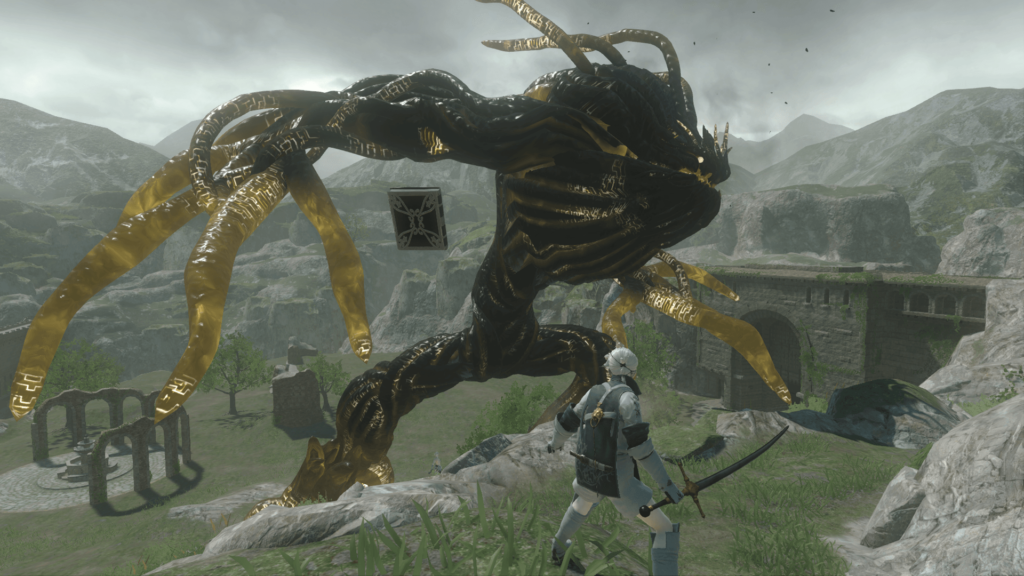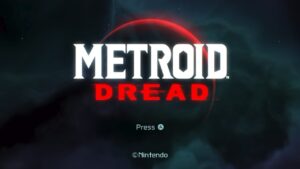“NieR Replicant ver.1.22474487139…” by Square Enix Review

In-game combat screenshot. Photo courtesy of Square Enix.
Intro
NieR Replicant ver. 1.22474487139… (aka NieR) is a remake of the original game, remastered for modern systems to serve as a prequel to NieR Automata as well as an opportunity for Western players to play as the original younger protagonist, who was made older and burlier when the game originally came out in the west for Xbox 360 and PS3. I haven’t played that original version so can’t speak to the changes, but highly recommend Dia Lacina’s piece for Vice that includes that context.
NieR is an action RPG where you play as an unnamed protagonist trying to keep his younger system alive as a magical virus wracks her body by running errands for villagers, obtaining magical powers, and killing a lot of the game’s enemies—Shades. Along the way he is joined by Grimoire Weiss, an ancient and sapient floating book; Kaine, a vulgar young woman with a penchant for murder ostracized by her home for the “crime” of being born intersex, and Emil, a young man with petrification powers who is notable for, in his odd moon-like headed form, being the mascot so to speak of the series. It’s a game that leads you to hell as you pave the way with good intent, and ultimately is one of the darkest works I’ve played in quite some time. Notably, to fully understand the story, there are five endings that mostly occur sequentially (with the fifth being a notable addition to the remake). This requires you to play the first half of the game about one and a half times and the second half three, if not four, full times to get the full picture. All in all, it took me about 50 hours to complete, though I didn’t spend the time grinding out the materials needed to upgrade all of my weapons and such.
Presentation
The first thing about Nier’s presentation that stuck out to me was the enemy designs. Shades, the rank-and-file enemies that you fight, look almost like they are made of police tape and black mist shaped into humanoid or quadrupedal form. It’s not necessarily the most dynamic of designs, with the enemies often feeling very cookie-cutter after a dozen hours or so, but they still manage to feel very different visually than enemies I’ve encountered in other similar titles.
The area design is solid, with the towns each feeling distinct and often bizarre and the fields and other combat environments, while not breaking the mold in terms of what they are (a field, a factory, a desert, etc), are fleshed out enough in terms of landmarks and changes in terrain to make them feel both more real and less standard for the genre. The Aerie and Facade are likely my favorites, with the former being a town built up along the walls of a massive canyon, the dwellings dwarfed by the danger they live in every day, and the latter a desert city of sand canals and changing elevations that leaves the player with a sense of accomplishment when they learn the ups and downs and manage to navigate it without the help of a guide or the canal’s ferry.
The Lost Shrine – an early area in NieR. Screenshot by Morgan L’Fey on PS5.
The bosses are where the design chops get stretched. Ranging from simple foes, like the bigger wolf than the other wolves or the really big robot, to the transforming building-sized eye or hideous and overwhelming creature of the sea, with a young girl serving as the head, they steal the show, and each time I encountered a new one, with the new challenges it would bring, I couldn’t help but feel excited.
The sound design is competent. I particularly like the sounds used for the voices of the enemies you face — an unintelligible but clearly structured murmur that manages to sound alarmed, angry, scared, etc. The voice acting, in general, is stellar — packed with emotion without sounding hammy, with particularly good work coming from your party members. The music is the lasting star of the game though — it’s haunting and evocative; adventurous and exhilarating; torturous and heart-rending; all in equal measures and used to great effect during both the gameplay and the cutscenes. While the versions from the remake aren’t readily available at the time of this review, the original game’s is on Spotify, and there aren’t huge differences that I have heard when listening to those versions.
Gameplay
The game’s core is running around a small handful of locations fighting repetitive enemies as you collect parts, look for a lost dog, or search for the location of the game’s central McGuffins, the Sealed Verses, or Stone Fragments. Combat is fluid and bombastic, with over-the-top magical effects being commonplace, and taken to extremes during the game’s impressive boss battles. The half dozen spells and three weapon types you can wield do help to mix things up, but it’s good that combat feels nice as you’ll be doing a lot of it, against enemies you’ve already fought. Your weapons and your spells can be modified and upgraded, both with literal forging, in the case of the weapons, and with the “Word” system. As Grimoire Weiss, your first companion is a book, you collect words from the bodies of your enemies, their blood being absorbed by Weiss to grant him more power. These words can then be used to lengthen the name of your spells and blades, giving them additional power, drop rates, armor piercing, or other effects. It’s a nifty system, but I tended to find myself just using the best attack modifiers and item drops as I could on everything, to whittle down the chunkier enemies and to collect the various items needed for fetch quests and the odd and sometimes painstakingly-obtained materials needed for weapon forging.
The game also has, primarily in the first half of the game, segments of markedly different gameplay. While some, such as the Resident Evil-esque mansion and Legend of Zelda-esque puzzle dungeon play mostly the same but with fixed cameras or additional factors to keep track of; others, such as the Forest of Myth, turn the game on its head by switching to a literal text adventure. These shifts help to break up the formulaic nature of the combat and the game’s progression, far more than turret or vehicular sections in a standard FPS do, and I’d love to see more games take such risks.
Narrative
With all of that said, the narrative is likely the part of NieR that will stick with the players the longest. The game takes place in a world that has suffered an apocalypse and is slowly dying. (Technically, it is a continuation of a joke ending from a prior work directed by Yoko Taro, Drakengard.) Most of the game is spent not knowing what happened, with the player trying to put scraps of information together into a cohesive understanding of events while the main character is too busy doing everything he can to save his sister, consequences be damned. Most of the truth comes out towards the end of the first play through the game, but the real depths of the narrative come forth during the further playthroughs. Long stretches of text detailing events from Kaine and Emil’s pasts are added, as well as additional scenes and dialogue throughout the game showing what was going on behind the scenes, or on the other side of the party’s wrath.
That isn’t to say that the game requires multiple playthroughs to have meaning or substance. This is a game about loss, about the slow decline of humanity, and few characters you encounter are exempt from heartbreak, or indeed death. The more lighthearted quest chains in the first half of the game work to build attachments to NPCs, most of which are unnamed, being referred to only by their professions or features, giving a strange sense of detachment which is overcome by how human their dialogue and actions make them feel. I would not have expected to cry during the quest lines involving the “Woman with the Red Bag” and her husband, the “Man with the Red Bag”, but I did. It’s difficult to really dive into all of the facets of the narrative without spoiling many of the game’s secrets, but suffice to say that it is a heartless world, and you cannot save everyone.
Conclusion
NieR is not a game for everyone. It’s repetitive, dark, gory, and violent, but it has an earnestness and sentimentality to it that persists through even the worst turns of fate. Anyone willing to experience the kind of story it’s telling should give it a go, though perhaps look up footage of endings C through E to save yourself the extra twenty hours of largely repeated content.
Scores
Presentation: 10/10
Gameplay: 7/10
Narrative: 8/10
Overall: 8.5/10



